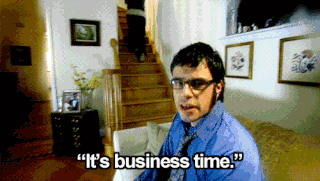The ultimate all-encompassing super sweet 2022 remote meetings guide (innovative!)
Here at Sesh, we've been studying best meeting practices for years. Based on our research, these are the key elements of running a good remote meeting.

We're halfway through 2022, and even though we haven't fully emotionally or mentally recovered from 2020, it's time to face the facts: Remote work is here to stay. What started as a scramble to move whole companies to remote work has now become the status quo. We've learned Zoom (or Webex), we've figured out how to have happy hours remotely, we've even somehow figured out how to balance being a decent employee, a babysitter, a homemaker, and maybe even having a social life while working from makeshift offices in our guest rooms. But there's one thing that's still holding us back, and honestly, it needed some serious help before 2020: Meetings.

If you think back to the golden years of 2019, can you remember how you felt about meetings? There may have been 1 or 2 that stood out as being really great, but where did the rest of your time go? Many people have the idea that meetings work better in person, and in some ways they were great (we honestly miss doughnuts and high fives). But the truth is, meetings have been broken for a long time, and going remote has created a whole new set of challenges.
And these bad meeting practices are doing more than just making your days more stressful than they need to be. According to The Muse, collectively, 15% of an organization’s time is spent in meetings, and unproductive meetings are wasting more than $37 billion per year.
But when you're working remotely, meetings are possibly even more important than when you were going into an office. Meetings are irreplaceable for collaborating with your teammates, making big decisions, and developing your company's culture.
So, it's high time we make some changes. Here at Sesh, we've been studying best meeting practices for years. Based on our research, these are the key elements of running a good remote meeting:
- Always have a meeting agenda
- Assign a meeting host
- Give everyone equal time to speak
- Vote on the hard things
- Make it fun
- Track meeting outcomes
Always have a meeting agenda
We feel so strongly about this one that we already wrote a whole blog post about it. A meeting without an agenda is like a Diet Coke without ice. We've all been to those meetings - the ones where you don't actually get into the core topic until 10:20am and you have another meeting at 10:30, so everyone's time is wasted and you all have to schedule a second follow up meeting to finish the discussion.
Having a meeting agenda set ahead of time will make sure each meeting attendee is on the same page (and they'll know if they're even needed there). It also keeps the meeting on topic, and can help you stay focused, instead of derailing at any offhanded suggestion.
Assign a meeting host
Usually the person who created the invite to the meeting or the person who knows the most about the topic ends up being the meeting host. That doesn't mean it's the right move. Honestly, running a meeting is a lot of work, and it takes special skills to do it right. The reason meetings run poorly is almost always because they are going unchecked by someone "in charge."
Next time you run a remote meeting, assign someone to be the host. This person is responsible for creating an agenda (with time limits if needed), cutting people off if they're dominating the convo, keeping time, and writing down outcomes. (We did say it was a lot of work.) This selfless person doesn't necessarily have to be the one that is doing a lot of talking... it helps to have someone on the sidelines, almost like a referee, helping along the conversation.

Having a meeting host will help your meetings run a lot smoother (especially if you follow the first rule and have an agenda to work off of). It's a lot to put on someone, so make sure you're swapping out responsibilities from time to time.
Give everyone equal time to speak
Your meeting just ended. You close your laptop because you literally can't look at a screen anymore. You go into the kitchen to get more coffee. You realize that you didn't say a single word during that entire hour and 14 minute long meeting (it went over). You realize that Greg talked for about half of it. You also realize you're not sure what you're supposed to work on next because the only thing that meeting clarified was Greg's distaste for the color chartreuse in your UI.

Sound familiar?
Now we love extroverts, and we love outspoken individuals with opinions. What we don't love is the fact that they can often dominate a conversation. Remote meetings have created a special social situation when the loudest one, or the one who keeps talking gets the mic. Introverts are happy not to speak at all, or they don't feel comfortable sharing their opinion in a crowded video call.
If you set up an inclusive situation, that can all change. Greg needs time to talk, but so does everyone else. Set up a system where everyone gets to speak equally.
You can use a timer, but you'll need the meeting host (from tip 2) to be pretty aggressive about timekeeping. It's a bummer tbh. Your other option is using a meeting software like Sesh. Sesh has an activity called Rounds that takes everyone in the meeting and divvies up time between them, with audio and visual cues letting people know when it's their turn to talk, and when their time is up.
Vote on the hard things
There are only three things guaranteed in life: death, taxes, and disagreements. There will come a time in a meeting where there is a standstill because of a disagreement between two - or even multiple people. Sometimes it's simple, like is chartreuse the right color for the UI? Sometimes it's harder, like should we fire Greg because he doesn't agree that chartreuse is the right color for the UI? (Just kidding, you probably shouldn't vote about firing people.)

The point is, there's usually a lot of discussion and ultimately disagreement on how to move forward on something. When that happens, you can end up talking about it for days before making a decision. That's why we recommend taking things to a vote as soon as it comes up. Giving your colleagues the power to vote allows them to feel valued and heard, while ultimately choosing something that the majority agrees on. (It also keeps away the type of people who say things like "my way or the highway.")
Make it fun
One thing that gets lost when we work remotely is the fun that happens before and after meetings. When you're in a room together, you have time to sit and chat and small talk. When you're in a Zoom, you may have some time to shoot the, um, shirt, but you also have people popping in at random and you have to fill them in or include them and then the meeting host comes in and shuts it down because it's business time.

After the meeting you'd usually go get coffee, or walk down the hallway together to talk about how wrong Greg is about his color choices, but instead you're just closing your Zoom and are once again, all alone to stare at your face in the black screen of your monitor, questioning all of your life decisions. (Or opening up a new Zoom for your next meeting that you're 7 minutes late to already.)
The point is, meetings aren't fun anymore. We've lost the human connection. And sure, HR is pretty good at putting together happy hours, but those are few and far between.
Injecting fun straight into your meeting will engage your attendees and help you keep some culture alive. How do you do that? Take some time to be human. Don't just jump straight into business. Talk about your weekends, or your days, or throw in a fun icebreaker that everyone can answer. Breathe some life back into your meetings by making everyone feel valued inside and outside of work.
Track meeting outcomes
Post-its, Evernote, Notion, Google Docs. All of these were created to remind our fallible brains what we were supposed to be doing. It's really easy to leave a meeting and immediately forget what was decided on. Especially if you have 5 meetings a day all on different topics.
That's why it's important to track meeting outcomes. Who's doing what and when. This keeps your team accountable and helps them understand what they're responsible for.
But it's not just about tracking these outcomes, it's about following up on them. You can write things in Google Docs all day, but if you're not regularly revisiting these tasks and making sure they're done, then you'll end up right back where you started.
Make remote meetings work for you
Meetings, especially remote meetings, can determine if you have a good day or a bad day. They impact your work culture, fire up your teammates, and get things done a lot faster than something async would. The key is to optimize them for the state of work we're in today. It's 2022. Let's stop the "you're on mutes" and start the inclusive, interesting, fun, and more importantly effective meetings we all know we deserve ✨
Btw - we just learned about the color chartreuse. That's why we referenced it a lot. It's a cool word and the color is actually pretty unexpected. It looks like this: #DFFF00. Should you use it in your own UI? Maybe. Ignore Greg.


